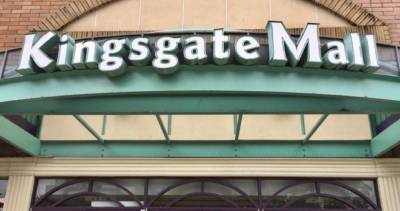From the Retinal Circus to the Cave, the essential Vancouver After Dark remembers the city's most fabled night spots
Vancouver After Dark: The Wild History of a City’s Nightlife
By Aaron Chapman. Arsenal Pulp Press, 247 pp, softcover
The fascinating thing about Vancouver After Dark: The Wild History of a City’s Nightlife is that you’re guaranteed to learn something even if you’re old enough to remember the Velvet Underground staging a druggy four-night stand at the Retinal Circus. Or an unknown California ska band named No Doubt playing for about six people at the Town Pump. Or the Dead Kennedys teaming up with the Modernettes and Brain Eaters for a first-wave punk bill at Skid Row’s Smilin’ Buddha.
All of those now-shuttered venues get their own chapters in Vancouver author Aaron Chapman’s impressively researched new book on the clubs and pubs that helped reshape a once sleepy port town into a world-class destination city.
It’s not always the feel-good story one might imagine, because progress and development often come with a downside. The book makes a good case that Vancouver is a place where everything retro-cool eventually seems to end up on the wrong end of a wrecking ball to make way for glass office towers and skyscraping condominiums. Through stunning archival photos, old flyers and posters, news clippings, and interviews with everyone from promoters and former owners to musicians and club staffers, Chapman provides a window into a long-gone past. As a cultural document, the result is every bit as illuminating and important as the work of Fred Herzog.
Everyone is familiar with the Commodore and its spring-loaded dance floor. But how many Vancouverites know that Drake and Granville—currently the site of a White Spot—was once home to the Trianon? The dance hall, according to a 1934 ad in the Vancouver Sun, featured “6000 feet of latest ship deck spring dance floor”.
Vancouver After Dark leaves us wondering why the hell the legendary Cave on Hornby wasn’t designated a heritage treasure instead of being demolished in 1981. Noting that people who never set foot in the spot regret its loss, Chapman writes: “The Cave was the city’s premier venue during the height of the nightclub show era—the early 1960s, when nightlife was styling and sophisticated. Many Vancouverites even remember its kitschy faux-cavern interior of papier-mâché stalactites and stalagmites with fondness, wishing the club were still here.”
Rising to infamy in the Rat Pack era—when double bourbons and a pack of Kools per day were considered part of a healthy diet—the Cave hosted everyone from Marvin Gaye and Louis Prima to Diana Ross and Wayne Newton. It was knocked down, with little or no protest from Vancouverites, to make way for a Hong Kong Bank of Canada tower.
The most famous nightspots—Oil Can Harry’s, the Starfish Room, Gary Taylor’s Rock Room—provide the backdrop for some of the greatest stories in Vancouver After Dark, but that doesn’t make the obscure venues any less interesting. Featuring a “macabre stained-glass front window and a murky atmosphere barely broken by the little pool of candlelight by the tables”, the Inquisition Coffee House on Seymour hosted a pre-megastardom Miles Davis in 1963.
Trivia fans will learn that Graceland was named partly as a tribute to former powerhouse B.C. politician Grace McCarthy, that Nine Inch Nails once played the fabulously scuzzy Luv-a-Fair, and that Vancouver’s East Side was once flush with places like the Log Cabin Inn, a southern-hospitality black club where $1.05 got you a six-piece band and a chicken dinner with hot biscuits.
Like too many clubs to list here, the Log Cabin Inn is now long gone. But thanks to Vancouver After Dark, it—along with the Body Shop, the Soft Rock Cafe, the Pig and Whistle, the Brickyard, the Hungry Eye, and Isy’s Supper Club—is at least no longer forgotten.















Comments